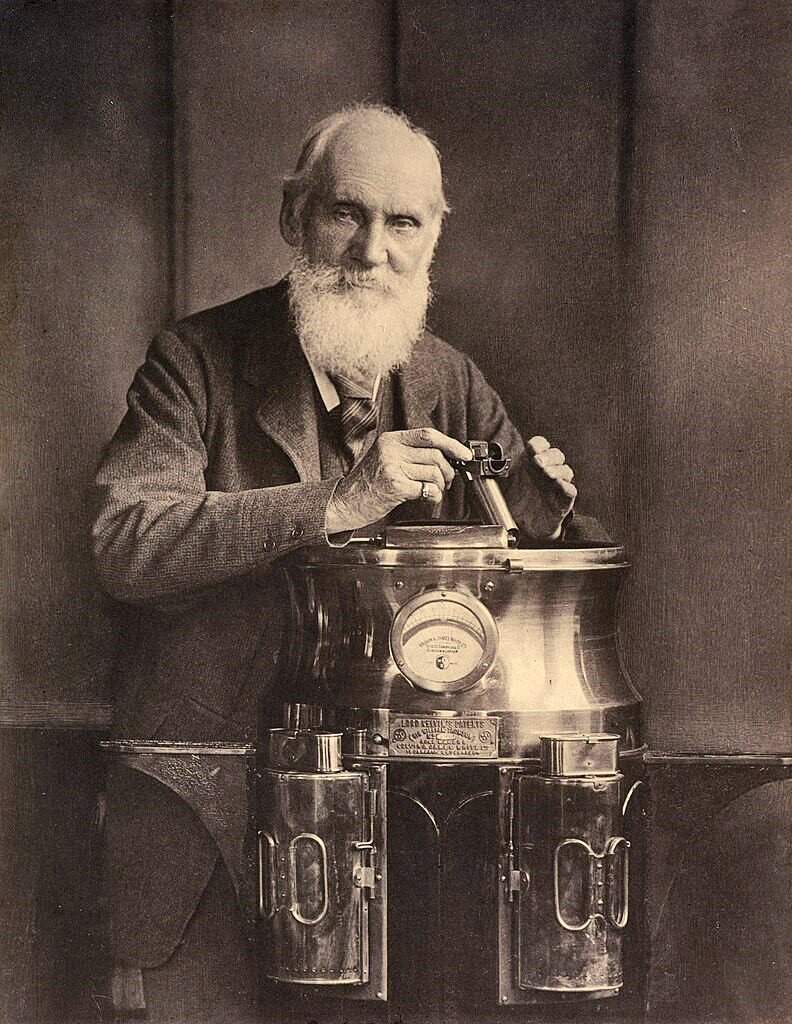
Credit: T. & R. Annan & Sons, public domain, via Wikimedia Commons
One of our greatest scientists was given an aristocratic title by Parliament. But he began life simply, as a math teacher’s son.
William Thomson was born in Belfast, Ireland. His father moved the family to Glasgow for a job at the university. He started William in classes at 10 years old.
Immediately, his talent began to shine. In his teens, he published three papers on the relationship between heat and electricity, sparking a lifelong interest in these fields.
He went to Cambridge at 17. But with his work already dazzling the scientific community, he was offered a department chair back in Glasgow at just 22.
He stayed at the university for more than 50 years, the rest of his career, even as his work drew international acclaim.
He collaborated with other leading scientists to shape the science of electromagnetism and define the physical behavior of gases.
Also a practical inventor, he helped establish transatlantic telegraph communications. His inventions earned him 70 patents and a sizable fortune.
At age 42, he was knighted by Queen Victoria. At 69, Parliament “ennobled” him with the title Lord Kelvin, chosen for the river that flowed by his Glasgow laboratory.
He’s remembered today in the Kelvin scale, which redefined how temperature is measured, pegging it to absolute zero, where molecular motion ceases.
This brilliant, versatile scientist would celebrate his 200th birthday this year.
Background
Synopsis: William Thomson, the first scientist to be elevated to Britain’s House of Lords as the “First Baron Kelvin,” was born 200 years ago. A mathematical physicist, engineer and inventor who helped lay the foundation for modern physics, he published more than 650 papers related to electromagnetics, thermodynamics, hydrodynamics and geophysics and held patents for around 70 inventions. One of his most famous accomplishments was determining the value of absolute zero. The Kelvin scale of absolute temperature was named in his honor.
- The fourth of seven children born to a mathematics professor, William Thomson was born in Belfast, Ireland, on June 26, 1824. His mother died when he was six years old.
- In 1833, his father was appointed professor of mathematics at The University of Glasgow, so the family moved to Glasgow, Scotland. He was nine years old.
- His father tutored him and his older brother until he began formal schooling at the University of Glasgow at the age of 10 along with other faculty children.
- He stood out from his classmates, publishing three papers in defense of Fourier’s theoretical work on the analysis of heat by the time he was 17, alluding to the mathematical relationship between heat and electricity even in his teens.
- He entered Cambridge at 17, receiving his degree with high honors at age 21.
- He developed some of the mathematics that supported Faraday’s work on what is now known as the Faraday effect, which describes the relationship between light polarization and magnetic fields.
- At 22, in 1846, this maverick scientist was appointed to the Chair of Natural Philosophy at the University of Glasgow, where he chose to remain for the next 53 years.
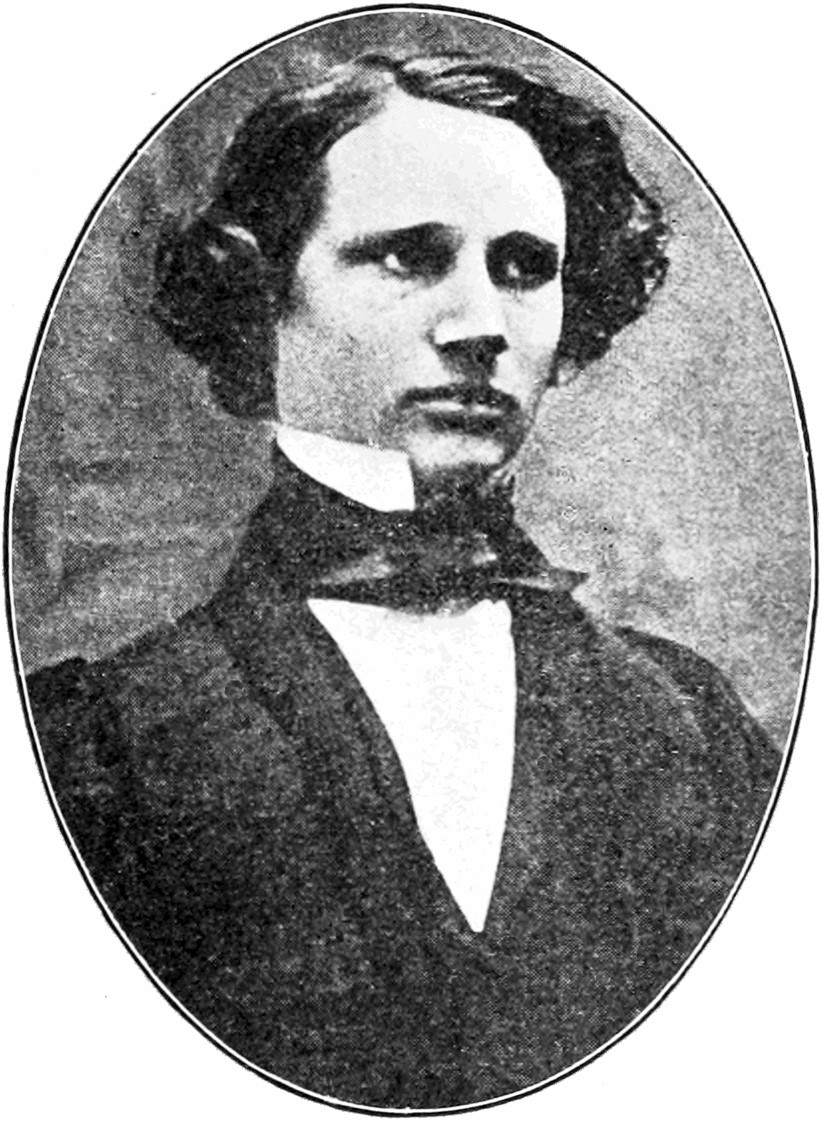
William Thomson at the age of 22 (in 1846), when he rose to the chair of natural philosophy at the University of Glasgow.
Credit: Popular Science Monthly, v. 72, public domain, via Wikimedia Commons- Throughout his career, he was a strong collaborator and unifier in the emerging field of mathematical physics.
- His fundamental belief was that electricity, magnetism, heat and light were related, and that unseen forces that had yet to be discovered mediated them.
- James Clerk Maxwell admitted that Thomson’s early work laid the foundation for Maxwell’s theory of electromagnetism published in 1865. His “Dynamical Theory of the Electromagnetic Field” held that an oscillating charge produces a changing electric field that causes a changing magnetic field, and these two changing fields continue to support and produce each other as they move through space.
- The concept of absolute zero, the temperature at which all molecular motion stops, was pioneered by Robert Boyle around 1665. Many scientists worked on the concept.
- In 1724, Daniel Fahrenheit developed a standard temperature scale that was adopted by the British Empire in 1776, while in 1742, Anders Celsius developed a different temperature scale that was adopted in Europe in the 1790s. Both were based on the freezing and boiling point of water (ED-243 The Fahrenheit Few).
- In 1848 (at age 24), William Thomson calculated the value of infinite cold—the temperature at which all kinetic energy stops—as -273.0°C, or -459.4°F, just slightly off of the currently accepted value.
- Today, we know that the temperature that reflects the complete absence of thermal energy—absolute zero—is -273.15°C, or -459.67°F.
- Thomson proposed the development of a temperature scale that used absolute zero as the zero point, so no temperature needed to be expressed in negative numbers. This scale was named after him once he was named Lord Kelvin in 1892.
- The Kelvin scale uses the same-sized increments as the Celsius scale but shifts the zero point to absolute zero.
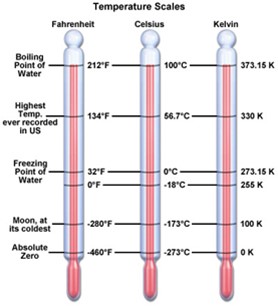
A comparison of the Fahrenheit, Celsius and Kelvin temperature scales.
Credit: The National High Magnetic Field Laboratory - Water freezes at 275.15 K and boils at 375.15 K.
- The Kelvin scale is used in gas law problems, because the pressure and volume of a gas depend on the kinetic energy (motion) of its particles.
- In the 1850s, working with Max Planck, Thomson proposed the second law of thermodynamics, that heat can’t be spontaneously transferred from a colder to hotter body. Around the same time, a German colleague named Rudolf Clausius proposed this concept in a slightly different way, that entropy constantly increases in a closed system.
- The Kelvin-Planck statement says that it is impossible to construct an engine that receives heat and converts it all to work. In other words, the efficiency of a heat engine may never reach 100%.
- Thomson also collaborated with James Joule in the discovery of the Joule-Thomson effect, which describes the fact that when pressure decreases, the temperature of a gas decreases because of gas expansion. This is important in refrigeration technologies.
- Thomson wasn’t always right. In 1862, he calculated the Earth’s age to be 100 million years.
- He was the first to use scientific reasoning to numerically calculate an age for the Earth.
- Thomson knew that on average, Earth’s temperature increases 1°F every 50 feet below its surface, and he assumed Earth began as a molten blob at 7,000°F. With these assumptions, he calculated how long it would have taken the planet to cool to that gradient.
- However, radioactive-decay reheating, which accounts for about half of Earth’s heat, would not be discovered until around 1898, so his calculation was off (ED-058 How Old is Earth?).
- This error also resulted in a scuffle with Darwin over his ideas about evolution.
- Thomson earned fame as an engineer and gained considerable wealth as an inventor through his more than 70 patents, using his mathematical skills to solve practical problems.
- His theoretical work on submarine telegraphy and his inventions for use on submarine cables aided Britain in capturing a preeminent place in world communication during the 19th century.
- In 1866 (at age 42), he was knighted by Queen Victoria to become Sir William Thomson for his role in building the first successful transatlantic telegraph cable, which helped Britain to gain an edge in 19th-century communication.
- The successful deployment of the 830-mi-long (1,330 km) telegraph system relied on a telegraph receiver he patented known as a mirror galvanometer as well as another device he invented called the siphon recorder. These devices were in great demand as the network of subsea telegraph cables expanded globally.

The original form of a telegraphy instrument, called the siphon recorder, for which Lord Kelvin obtained his first patent in 1867. Electrified ink drops onto paper moving across a brass surface to produce a Morse code–based readout with dots and dashes displayed on either side of the center line. This enabled transmission through subsea cables in the mid-19th century, a huge achievement in global communication.
Credit: Harry Robert Kempe, public domain, via Wikimedia Commons
- Thomson’s drive to standardize units and invent many instruments for the quantification of physical properties was driven by his passionate belief in the superiority of quantitative knowledge. He wrote:
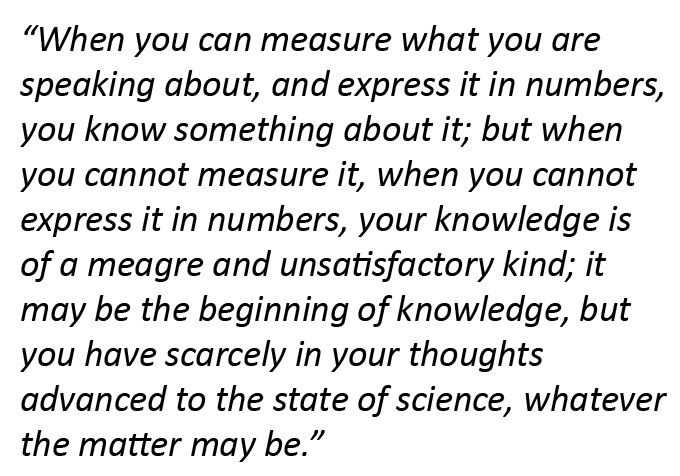
- In 1892 (at age 68), Thomson was “ennobled” for his scientific achievements, becoming the Baron Lord Kelvin of Largs in the County of Ayr, after the River Kelvin that flows near his laboratory at the University of Glasgow.
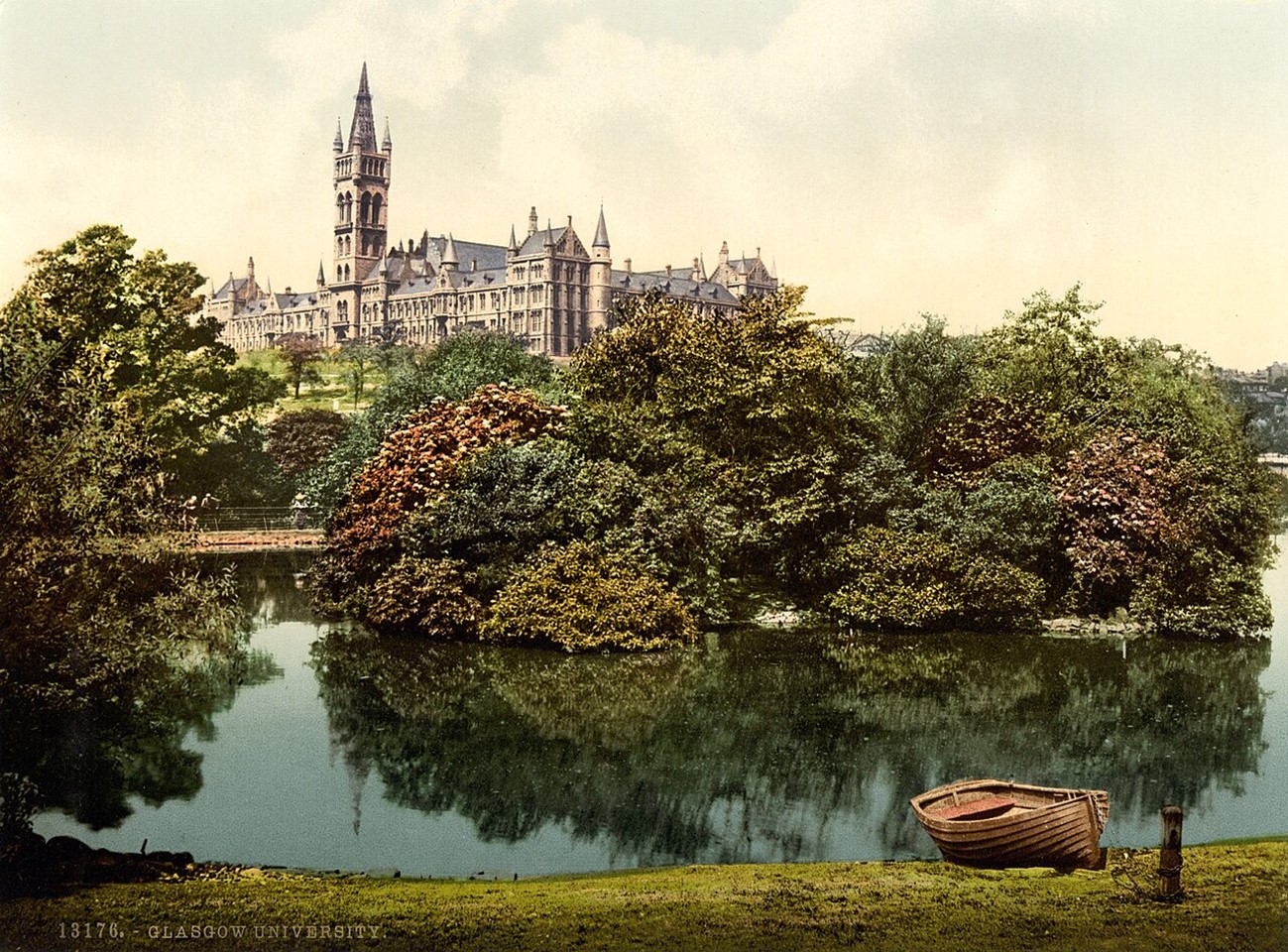
The meander of the River Kelvin containing the Neo-Gothic Gilmorehill campus of the University of Glasgow designed by George Gilbert Scott, to which the university moved in the 1870s (photographed in the 1890s).
Credit: Detroit Publishing Co., under license from Photoglob Zürich, public domain, via Wikimedia Commons- He retired from the University of Glasgow in 1899 and served as vice chairman of the board of the British Kodak Limited Company (affiliated with Eastman Kodak, the famous photographic supply manufacturing company).
- In 1904, Thomson became the chancellor of the University of Glasgow.
- He died in 1907 at his estate in Largs, Scotland. An exhibition of his work can be found at the University of Glasgow’s Hunterian Museum.

